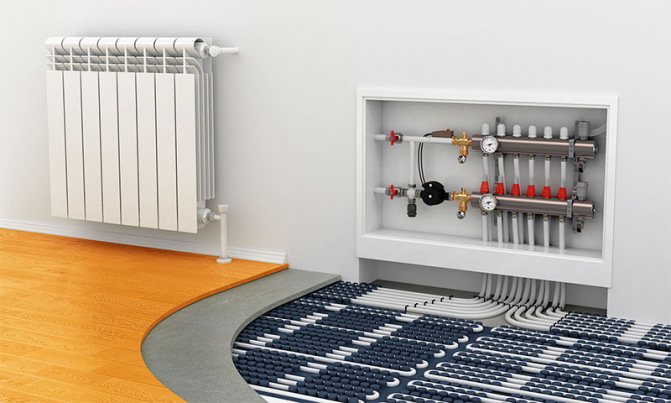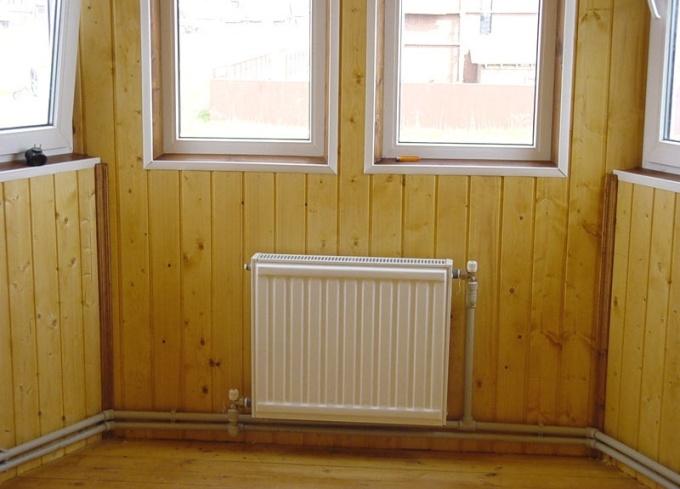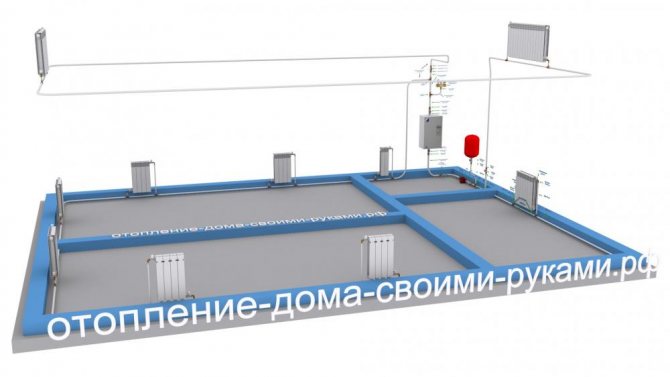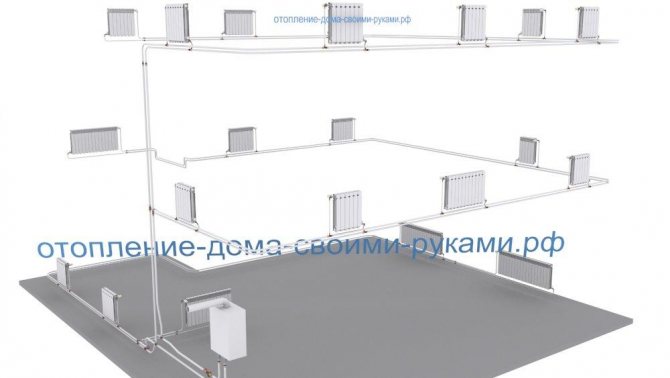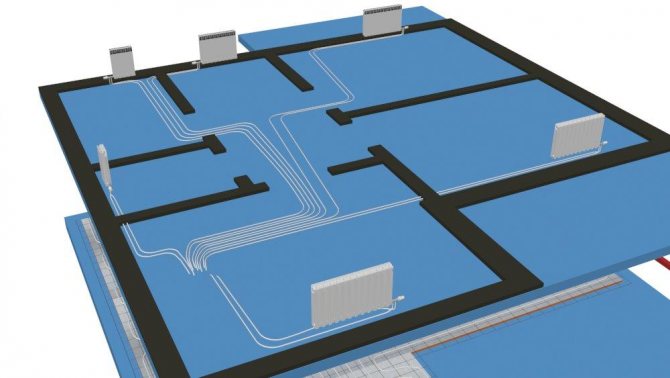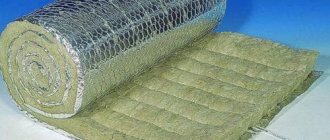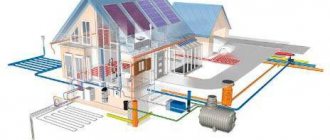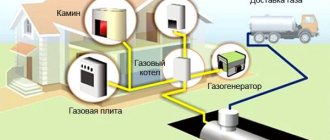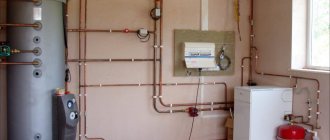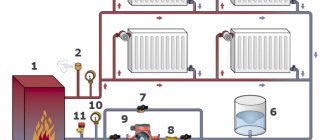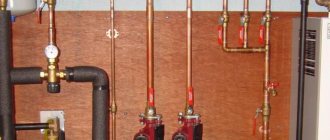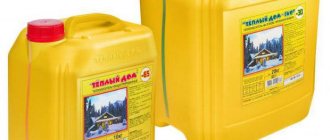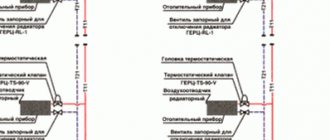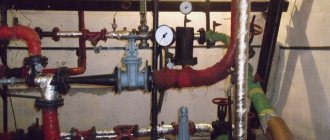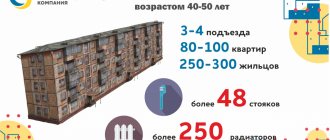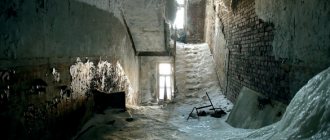Basic cottage heating options
When planning the construction of a private house or moving from a city apartment to a country cottage, we estimate not only the size of the initial construction or renovation costs, but also the cost of maintaining such housing.
And it differs significantly from the cost of operating a city apartment. And one of the main cost items here is heating costs.
Consider and compare the main available options for organizing heating in a cottage.
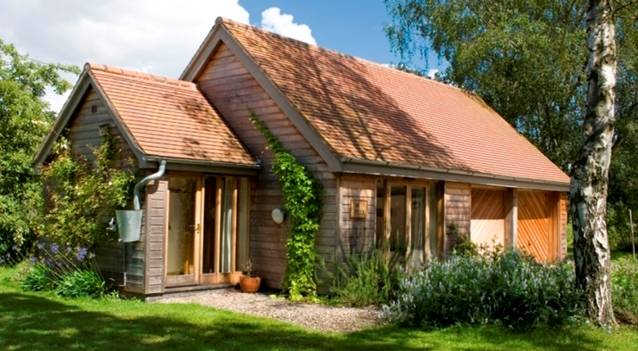
Pipes
At first glance, it may not seem important which pipes are used for heating. But after considering the pros and cons of each material, it becomes clear why this is a serious matter.
One of the most popular types of pipes is metal-plastic. Their diameter ranges from 16 to 63 mm.
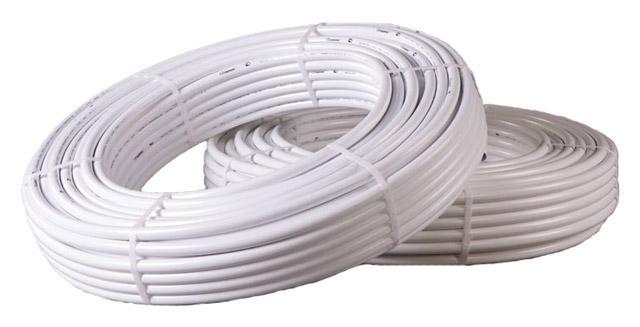

metal-plastic pipes
Among the advantages of this material are:
- thermal conductivity is low,
- easily repaired,
- no need for professional editing tools.
The disadvantages include the following:
- the connections may leak,
- dents remain on impact.
Another option that is often used is polypropylene.


polypropylene pipes and fittings
It has the following strengths:
- large diameter - up to 125 mm,
- resistance to mechanical pressure,
- when the system freezes, the pipes do not become unusable,
- after the soldering, there can be no liquid leakage.
However, there are also weaknesses:
- the need for expensive equipment to do the installation,
- lengthen with strong heating of the coolant,
- if damaged, they are difficult to repair.
When choosing pipes, it is better to take into account weather conditions, type of heating and financial capabilities.
Heating batteries
One of the main elements in the heating system. From the wrong selection of the battery, the efficiency of the entire heating may depend. Nowadays there is a huge selection of radiators. If you classify them by the material from which they are made, then the following types can be distinguished: steel, cast iron, bimetallic and aluminum. In order not to disassemble all possible options, it is enough to understand the basic principles for choosing a battery.
- System type. The necessary criteria for the radiator depend on whether there is autonomous or central heating. For a centralized system, it is better to take batteries that can withstand pressure surges and water of different acidity. Radiators of different pressures can be used for autonomous heating.
- Heat transfer. According to this indicator, aluminum is in the first place, then steel, and then cast iron. But it is also worth considering that, for example, the same cast iron cools down longer.
- Life time. In this parameter, cast iron radiators are in the first place, then bimetallic, steel and cast iron.
- Other criteria. This includes more visible parameters - design, price, manufacturer, and so on.
Considering all these factors, you can choose the best option for yourself.
Heat carrier
Without this component, the heating system will not work. The most common thermal fluids are water and antifreeze.
- Water. Still, they use it more often. Since you do not need to buy water for heating, this is a very economical option, and it transfers heat perfectly. In addition, the water is not harmful to the environment.
- Antifreeze. There is a specially made for the heating system. Although you have to pay money for it, its main advantage is that it does not freeze at low temperatures.
When making a choice between water and antifreeze, it is good to weigh financial possibilities, heating system failures, weather conditions, and so on. The above information will help you choose the right different elements of the heating system.Before choosing, it is important to carefully re-read all the advantages and disadvantages.
The main options for heating a cottage 1. Main gas
This solution seems to be the simplest, but it can only be so if the site is initially gasified. Otherwise, the cost of laying the pipeline can range from 500 thousand to three million rubles per household: it all depends on the size of the village, the distance of the gas pipeline and other conditions.
Actually, gas is still the cheapest type of fuel in Russia, but the ruble cost of its production is growing, while world prices tend to decrease. Therefore, it is difficult to predict the situation for a long time. We proceed from the assumption that an adequate calculation of the cost of heating involves an analysis of costs for some rather long period of time, taking into account repair and operating costs. In particular, for a country house, it is advisable to consider a 50-year period of operation.
We will assume that for heating a two-story cottage with an area of 300 m2 with a kitchen, an automatic boiler with a capacity of 15 kW is needed.
The cost of such equipment from well-known manufacturers today is about 30,000 rubles. It needs to be changed once every 10 years, that is, in 50 years, at today's prices, 150,000 rubles will "run over". Taking into account the cost of annual maintenance (approximately 5,000 rubles) - 400,000 rubles, or 8,000 rubles. in year.
With the cost of main gas 5.14 rubles / m3 (for the Moscow region) and the specific heat of combustion of 33,500 kJ / m3, the cost of 1 kW * h of heat will be no more than 59 kopecks (taking into account the actual efficiency of the boiler, which is approximately 92%) ... During the heating season, which, for example, in the Moscow region officially lasts 215 days, for a cottage with an area of 300 m2, the heat demand will be 85,000 kWh, which will cost about 50,300 rubles. Total, taking into account operating costs, we get 58,300 rubles.
In total, in the general case, we get 58,300 rubles. per year (provided that gas has already been supplied to the village).
Which boiler to choose?
When it comes to choice, you should start from 4 main options. Considering each one, one must consider what kind of fuel is available and cheap in a particular area.
Gas
The gas boiler is the most popular due to the availability of this fuel. If we talk about his strengths, then the following can be noted:
- long service life,
- high efficiency, which means cost savings,
- ease of maintenance,
- no need to spend energy on fuel procurement when there is access to the highway.
Now about some of the weaknesses:
- permission to install the boiler is required,
- to connect, you need to call special services,
- due to pressure surges in the gas pipeline, the unit shuts down,
- gas makes noise during combustion.
In general, an economical and reliable type of heating, requiring only correct installation.
Electric boiler
This device is also quite popular. Here, the heating of the coolant is due to electricity. Since it is widely available, it is worth considering this method from different angles. Pluses of electrical equipment:
- works without noise,
- relatively low cost,
- does not harm health or the environment,
- ease of management.
The disadvantages include:
- in case of voltage surges, the device is turned off, and the automation is also disabled,
- electricity consumption,
- for a powerful unit, a 3-phase 380 V network is needed.
Such a boiler is especially suitable when the price of electricity is inexpensive.
Solid fuel boilers
Quite a well-known type of boilers. Here, coal, wood and so on are used as fuel. Speaking about the advantages of such equipment, one should remember the following points:
- inexpensive type of fuel,
- ease of use,
- does not require any documents for installation,
- easily repaired.
Here are some of the cons:
- a lot of time and effort is spent on fuel procurement and boiler maintenance,
- there must be a chimney.
This heating method is quite often used in settlements without a gas main.
Oil-fired boilers
It uses liquid fuels such as fuel oil, kerosene and so on. Listing the advantages of liquid fuel equipment, the following areas should be named:
- heating independent of communications,
- ease of use,
- high efficiency,
Speaking about the cons, you need to remember the following nuances:
- a separate room for the boiler is obligatory,
- expensive equipment,
- high fuel cost,
- the need for large fuel tanks.
Usually, heating units with liquid fuel are not used often.
The main options for heating a cottage 2. Gas tank
If there is no main gas, you can store liquefied gas. Many do this, although this method assumes that a huge container with explosive liquefied gas will be constantly buried on your site. At a minimum, this requires a fairly large fenced area where nothing can be planted or built, and special security measures. In addition, an accessible source of liquefied gas is required with the possibility of delivery to the site.
The cost and efficiency of boilers for liquefied gas are approximately the same as for mains. The installation of the gas tank will cost about 400,000 rubles. In terms of 50 years, we get 800,000 rubles, or 16,000 rubles. in year.
With the cost of liquefied gas 15 rubles per liter (with delivery within 100 km from a large city) and the specific heat of combustion of a propane-butane mixture of about 12.8 kW * h / l, we get the cost of 1 kW * h of heat at 1.23 rubles, which is equivalent to expenses in the amount of 104 550 rubles. in year.
And taking into account the cost of operation - 120 550 rubles. in year.
Types of energy and heat carriers
Heating systems can be classified as follows:
- traditional, using liquid heat carriers, transferring heat from the heating unit through the pipeline to the heating devices;
- air, using a coolant air, which is heated and supplied to the heated room;
- direct electric, dispensing with a coolant, but directly converting electricity into heat.
(See also: Heating a Wooden House with a Solid Fuel Boiler)
Traditional systems can use gas as a heat carrier, liquid fuels - diesel fuel, fuel oil, electricity, solid fuel.
The most economical and optimal type of fuel is gas. The biggest drawback of these systems is the significant cost and complexity of documenting the connection to the centralized system.
The use of liquid fuel carries with it a lot of inconveniences: the complexity of the delivery and storage of the energy carrier, the need for increased security measures. (See also: Heating boiler with water circuit)
The disadvantage of traditional heat supply systems is the possibility of emergency coolant leaks, especially if antifreeze, a poisonous and dangerous compound is used. Periodic switching on of heating units and pumps creates noise and vibration. For trouble-free functioning of the heating system, periodic preventive maintenance of the boilers is necessary.
For the operation of air heating systems, it is also necessary to install boiler equipment, which entails all of the above disadvantages. But from an environmental point of view, this system is more acceptable and promising. The heating system using air as a heating medium is reliable and easily adjustable. However, even when using special filters, it does not protect the room from the ingress of dust particles and other organic matter into the air, which burn on the surface of the boiler equipment and form carbon monoxide.
Direct electric heating is inexpensive to install, but uses an extremely expensive source of thermal energy - electricity. (See also: Scheme and installation of heating wiring with metal-plastic)
The main options for heating a cottage 3. Diesel fuel
Diesel fuel is preferable to use in remote settlements, as it is usually easier to buy and deliver to the site. In addition, you can transport it yourself. The efficiency of a diesel boiler is several percent lower, it costs a little more (a 15-kilowatt boiler, about 40,000 rubles), and lasts a little longer - up to 15 years. An underground fuel tank with a supply system and installation will cost about 200,000 rubles. In addition, a diesel boiler is dependent on electricity: with frequent blackouts, you will have to take care of buying a generator. We will consider the cost of service to be approximately the same everywhere - 5,000 rubles. in year. If we operate with these figures, then the operating costs for 50 years at current prices will amount to 610,000 rubles. or 12 200 rubles. in year. The cost of diesel fuel for boiler houses, taking into account delivery, will be taken equal to 36 rubles. per liter (varies by region). The specific heat of its combustion is 10.3 kW * h / l. Those. the cost of 1 kW * h of heat, taking into account the efficiency of diesel boilers, will be 3.93 rubles, and the cost of the heating season - 333,800 rubles.
Taking into account operating costs - 346,000 rubles. in year.
The main options for heating a cottage 4. Solid fuel
In this capacity, firewood, pellets (briquettes) or coal can be used. However, you need to understand that a solid fuel boiler is not fully automatic. This means that someone must constantly work as a fireman. In the case of pellet boilers, the level of automation is higher, but the level of danger of fuel ignition is also higher.
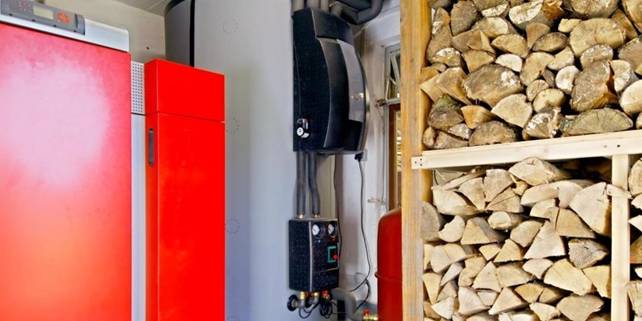

This must be taken into account when using coal-fired boilers. Therefore, in both cases, additional security measures will be required. The cost of equipment varies greatly. For example, a 15-kilowatt boiler with manual loading will cost about 25,000 rubles, but the prospect of constantly running into the boiler room and throwing firewood or coal by hand is unlikely to smile at you. A boiler with automatic fuel supply can cost from 100,000 (pellet) to 200,000 rubles. (carbonic). True, they all serve for 20-25 years.
As a result, the operation of a wood-burning boiler will cost 6250 rubles. per year, automatic pellet - at 10,000, and automatic coal - at 15,000 (all - taking into account the cost of annual maintenance).
The cost of fuel depends significantly on the region. For example, in the Moscow region, 1 cubic meter (on average 650 kg) of birch firewood at a wholesale price today will cost 1,400 rubles. (we believe that when ordering a large volume at once, delivery will be free), coal of acceptable quality - 6,000 rubles. per ton, fuel briquettes - about the same price.
If we assume that the specific heat of combustion of firewood is approximately 3.4 kW * h / kg, coal - 7.5 kW * h / kg and briquettes - 5.6 kW * h / kg; that the efficiency of a wood boiler is approximately 75%, and that of an automatic boiler is 80%; then we get the cost of 1 kW * h of heat, respectively equal to 0.84, 0.64 and 0.85 rubles. (firewood, coal and briquettes). That is, heating with wood will cost 71,400 rubles a year, and 54,060 rubles with coal. and briquettes - 72 420 rubles.
And taking into account operating costs: firewood - 77 650 rubles. in year; coal - 69,060 rubles. in year; briquettes - 82 420 rubles. in year.
Coal heating, as we can see, is cheaper than heating with other types of solid fuel, but firewood in 2020 has become more profitable than briquettes. But any solid fuel comes out more expensive than main gas.
Comparison of the efficiency of different heating systems
This article was written very long and hard. Not because you had to come up with something, but only because of the fact that it is explained in simple words understandable to most, what are the advantages, for example, water underfloor heating radiator heating was not an easy task in terms of energy efficiency. This is simply impossible without the introduction of special physical terms and definitions. I had to somehow debate these aspects and explain them in a language that is more familiar to you and me.
So, many have probably already heard that heating underfloor heating is more efficient than radiator heating. More efficient than radiators and heating with warm skirting board... But what this very efficiency lies in, which is ultimately expressed in monthly utility bills, probably not everyone understands. Let's try to figure it out.
Heating with radiators in principle, its history dates back to the distant 1875, when the first apartment with water heating appeared in Russia and throughout Europe. In those days, rather bulky pilasters played the role of radiators. Before that, heating was mainly stove. The problem was that the stove heating system was not suitable for large, multi-room premises. in the room in which the oven was directly located, comfortable conditions were created due to radiant heat transfer, and the rest remained behind convective heat transfer. Due to the low efficiency of the latter, it was necessary to heat the furnaces much more, which increased the already considerable fuel consumption.
Due to the fact that the thermophysical properties of water, such as heat capacity and thermal conductivity, are several orders of magnitude superior in this respect to air, radiator heating system allowed to significantly increase the efficiency of heating buildings and reduce the consumption of firewood and coal.
Almost 140 years have passed since then. Design radiators improved, as a result of which the heat removal from the unit surface of these devices increased, but these improvements did not eliminate the main and main drawback.
The fact is that in comparison with the area of the room, the surface of the radiators is relatively small. This creates the need to heat the supplied heat carrier to high temperatures (70-90 oC). And having such a high temperature, the radiator essentially ceases to be a radiator, i.e. the main method of heat transfer is no longer radiation, but convection.
The temperature field with this method looks like this: the air heated from the radiator is natural
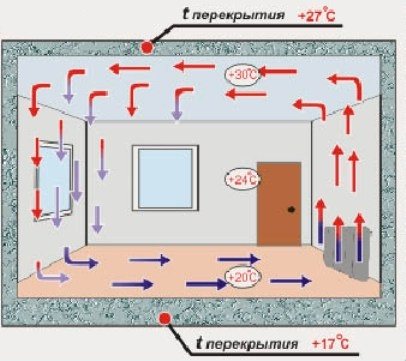

in a way rushes up to the ceiling, where initially having a temperature of the order of + 30 оСas the air cools down, it gradually loses its temperature. In the area of the feet, the air temperature is 17-20 оС... At the same time, the floor temperature is - 16-17 оС... The figure clearly shows that air circulation is constantly maintained in the room, which, firstly, transfers dust and suspended particles, and secondly, which is important, a certain thermal work is spent on circulation. That is, radiators not only heat up the air, but also give it the energy of movement. Nothing appears out of nowhere and an additional 4 to 7% of all thermal energy is spent on the circulation of the air mass.
The most important disadvantage radiators, as you probably noticed from the diagram, is that outside useful volume the room temperatures are relatively high (up to 30 ° C), which makes no everyday sense (what difference does it make to you, how many degrees are there in 1 meter above your head ..?), but, on the contrary, significantly increases heat loss through the ceiling and to ventilation.
Shortly speaking, heating with radiators requires heating the entire volume of the room in a certain way. The average height of the room temperature is as follows: 1.5 meters above the floor level (60% of the room volume) - the average temperature is about + 20 оС, floor level from 1.5 m to 2.5 m (40% of the room) - average temperature about +26 оС... Thus, the average actual temperature in a room of volume V is determined by the equation:
Tsrrad. = (0.6 × 22 + 0.4 × 26) = 24 ° C.
Note that the higher the room temperature, the naturally higher the heat loss.
In order to start considering radiant heating systems, which include the system warm water floor and the system warm skirting board, it is necessary to introduce another important physical term - the irradiance coefficient. Without resorting to intricate formulations from physics and trigonometry, let's explain.The irradiance coefficient is the portion of thermal energy that can be radiated to your body from any surface. Since a person is a creature most often erect, located at least 16 hours a day in a vertical plane, it is obvious that it is more difficult to radiate heat from the surface of the floor to our body than from the surface of the walls. And so it turns out physically. The reference values of the coefficients of exposure to the surface of the human body will be: from the floor ~ 0.130, from the surface walls ~ 0.240... Further in order.
If, for example, the power of the system warm floor indoors is 500 watts, then when it works on the human body, the order of 65 watts (replenishing about 60% of all heat losses of the body), the rest of the heat is transferred by means of heat transfer through the feet (see the article "AVANTEN Water Heated Floor. Principles of Reducing Operating Costs") and convection. The distribution of air temperatures throughout the room is fairly even (see figure) and on average is about 20 oC... There is no air circulation, heat between the air layers is transferred mainly by diffusion.
Heating warm skirting board Is actually a combined heating warm walls and warm floors... The skirting board does not work differently (see the article "The physical aspect of the efficiency of skirting heating in buildings"). At the same time, due to an even greater radiant component in this type of heating (irradiance coefficient 0,240) a person feels himself quite comfortable in the room, even if the air temperature in it is set at +18 ° C, due to its fairly uniform distribution over the volume. With a small approximation, the average temperature can be taken as about 19 ° C. Heating with a warm plinth does not directly heat the surface of the floor and walls, but mainly due to the convection of a small volume of air flowing along their surfaces. At the same time, at best, about 1% of thermal energy is spent on thermal work.
Thus, according to the ratio of average temperatures in the premises, it will be easy to calculate in numbers the comparative efficiency of a particular heating system.


The physical meaning of the numbers given in the table boils down to the fact that
if the same room is heated, so that the person in it was comfortable, alternately three different systems, then the greatest heat losses will be in a room with radiators, a room with a water heated floor will require 21% less energy, while a room with a warm baseboard will reduce the need for heat by 24%... And, all this is due mainly to a more rational distribution of heat throughout the building.
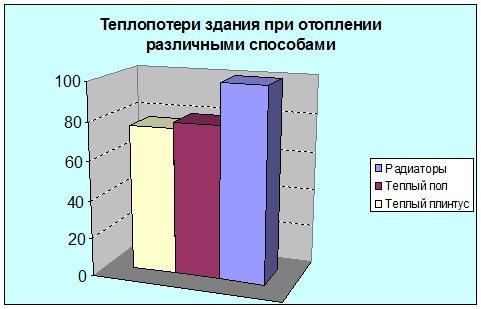

We consider it necessary to note that, as can be seen from the material of the article, the design example is shown for a building with standard (apartment) ceiling height. With increasing room height, the difference in energy efficiency between radiators and radiant heating systems (water underfloor heating and warm skirting boards) will only increase.
AVANTEN company,
18.07.2013.
The main options for heating a cottage 5. Electric boiler
The cost of an automatic electric boiler of the power we need (30 kW) will be about 50 thousand rubles (it will have to be changed every 10 years). You will also have to pay extra for additional input capacity, which is at least 10 thousand rubles per kilowatt (we take into account the most reasonable prices on the market). The total cost of connection will be 300 thousand rubles.
The cost of a kilowatt-hour of electricity in the Moscow region is 4.81 rubles / kW * h, the boiler efficiency is 99%. In total, we get the annual cost of heating - 413,000 rubles.
And taking into account the cost of equipment - 424,000 rubles. in year.


